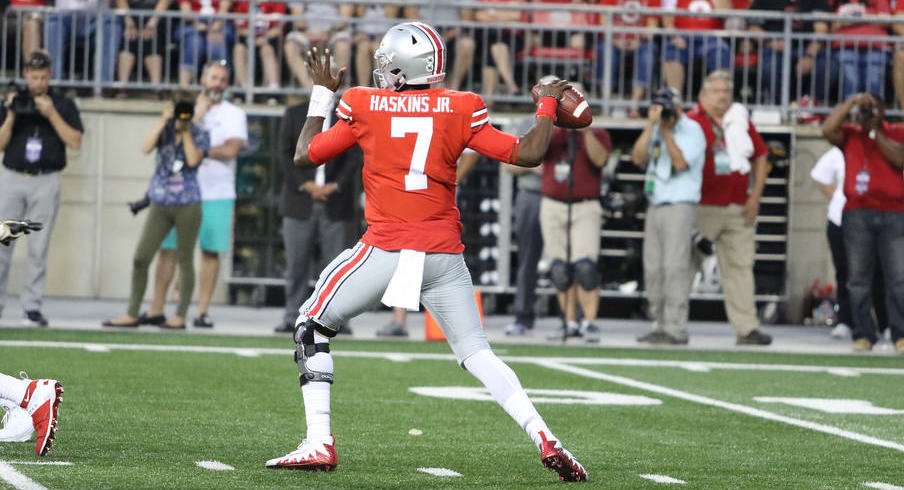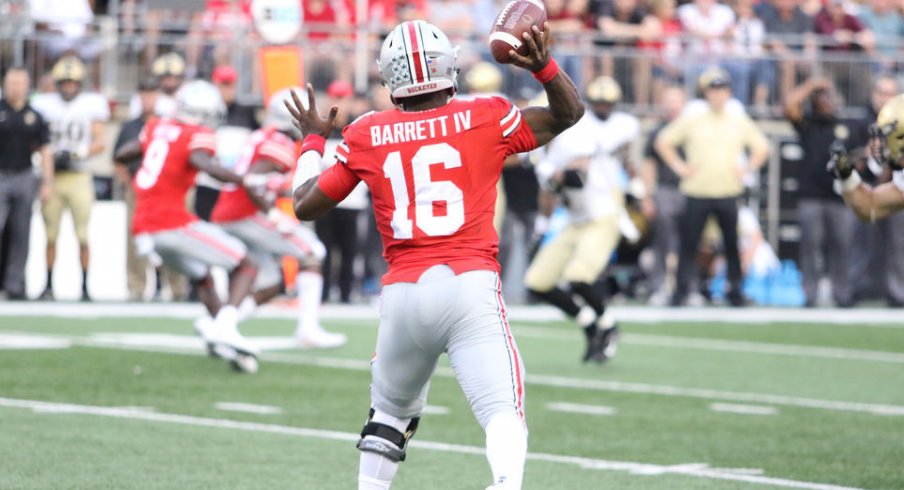FILM STUDY: HOW THE BUCKEYES BUILT AN ENTIRE GAME PLAN AROUND BUBBLE SCREEN ACTION
"I think it is perfect because we have guys like K.J. (Hill) and Parris (Campbell) in the slot who can really make the first guy miss." - Ohio State wide receiver Terry McLaurin.
One needn't have watched all three of Ohio State's first three contests all that closely to recognize that the third was quite different from the first two. Sure, the cadets from West Point ran a unique, option-oriented offense full of pitches to the outside, but the Buckeyes' certainly seemed focused on getting the ball to the edges when they had the ball as well.
Though virtually every aspect of Urban Meyer's offense was criticized last week (except for his ability to recruit running backs), the home team in the Horseshoe came out with aggression on their opening drive, stressing the perimeter on every single play. Of course, that eight-play, 75-yard drive included five runs between the tackles and was capped by a J.T. Barrett trot into the end zone, but the plan had been clearly laid by the OSU coaching staff for all to see as the young receiving corps in scarlet and gray was about to have a big day.
After repeatedly running into a stacked box the week prior against Oklahoma, Meyer entrusted coordinator Kevin Wilson and QB coach Ryan Day to stretch the defense with Run-Pass Options (RPOs), which often came as simple 'relief' routes outside added to the existing run concepts already installed in the playbook. Every single play on the opening drive was an RPO of some sort, and the result was an offense that moved the ball at will.
Much like the triple option we saw from Army all afternoon, there is no pre-determined path for the football on these plays, as Barrett often had three places to send it. If the first defender he read stayed home, then the ball was handed off since the Buckeyes would have a numerical blocking advantage. If that defender attacks the run, Barrett then has the option to run outside or throw a bubble screen to the slot receiver.
Those slot receivers, Parris Campbell and K.J. Hill, would be busy catching screens all day long, hauling in 14 balls for 128 yards. While neither had seemed to find much rhythm catching the football downfield in the first two games of 2017, this catch-and-run mentality is perfectly suited to their skill sets as athletes that can make tacklers miss in the open field.
The best way to set up a bubble screen is with three receivers to the same side, meaning this Bubble-Screen RPO can become predictable, especially when the back is to that same side of the quarterback. If that's the case, then the defense can easily roll to one side and get enough bodies in both places. But Wilson was ready, sending jet-motion from even formations and not allowing the defense to get the needed numbers outside.
Entire article:
https://www.elevenwarriors.com/ohio...-entire-game-plan-around-bubble-screen-action




